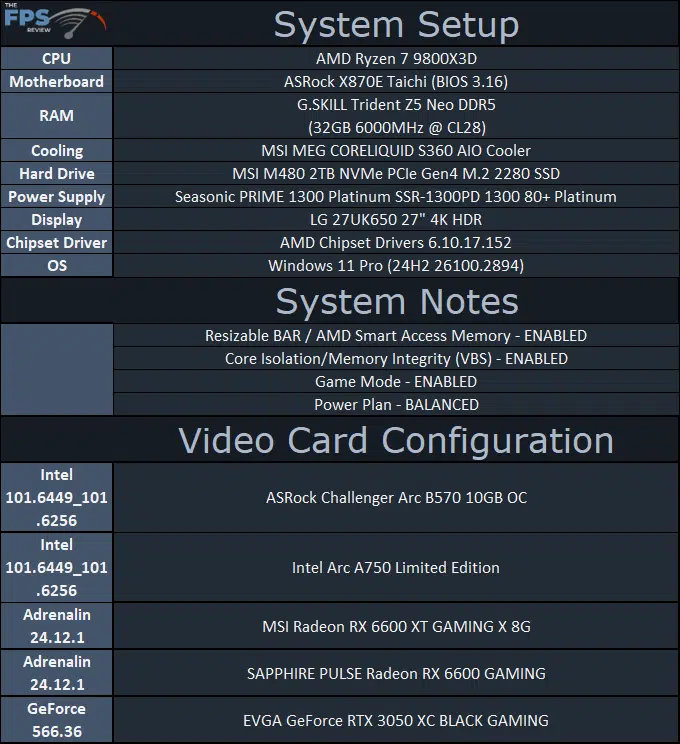Test Setup
*IMPORTANT CPU NOTE*
For this review, we have reviewed the ASRock Challenger Arc B570 10GB OC on two different CPUs. In the graphs (not labeled) the ASRock Challenger Arc B570 10GB OC runs on the AMD Ryzen 7 9800X3D CPU, as is every other CPU on the graphs. Where labeled, the ASRock Challenger Arc B570 10GB OC is also tested with an AMD Ryzen 5 7600 CPU. This is marked and labeled in the graphs, beside the card name. Otherwise, every other video card is using the AMD Ryzen 7 9800X3D CPU. We are providing results with the Ryzen 5 7600 CPU to explore CPU overhead performance with slower CPUs on Intel Arc B570 GPU.
GPU Comparison Goal
For our comparison GPUs, we are including GPUs that are priced (either at MSRP or available at current pricing) to the ASRock Challenger Arc B570 10GB OC. In this way, you can look at the ASRock Challenger Arc B570 10GB OC as an upgrade path option from a previous generation GPU in this same price segment, to see how the Intel Arc B570 might benefit the gameplay experience as an upgrade solution.
Therefore, we are comparing like-to-like pricing segment GPUs. For example, how much faster would the Intel Arc B570 be if you purchased a GeForce RTX 3050, or Radeon RX 6600, or Radeon RX 6600 XT and wanted to upgrade to the Intel Arc B570 spending nearly the same money you did before? We can find that out.
All of the comparison video cards, except the Sapphire Pulse, are factory overclocked, so they are boosted a bit over a reference clock speed. Notably, the MSI Radeon RX 6600 XT has a high factory overclock which puts it very near to the reference performance of a Radeon RX 6650 XT, so it comes very close to representing that level of performance as well, just in case you got the 6650 XT, and not the 6600 XT, both are close to each other in real-world performance.

